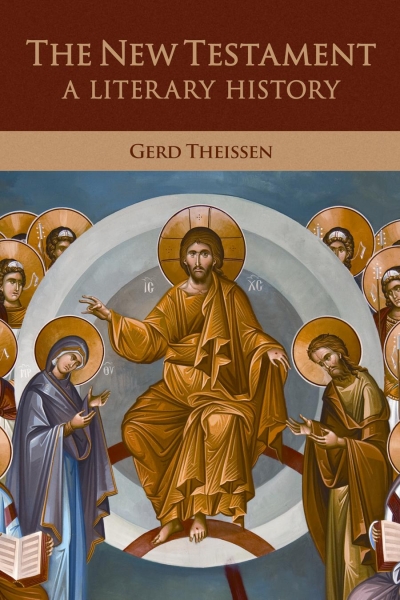Gerd Theissen takes up the problem of the emergence of the New Testament canon out of the wide variety of early Christian literature. Drawing from Max Weber's discussion of the evolution of religious organizations, Theissen describes the development of early Christian literature as a series of phases in the life of the movement: the charismatic, the pseudepigraphic, the functional, and the canonical.
Contents:
Introduction
Part One: The Double Beginning of Early Christian Literature
1. The Charismatic Beginning of the Gospel Literature: Jesus
2. The “Charismatic Phase” of Epistolary Literature: Paul
Part Two: The Fictive Self-Exegesis of Paul and Jesus
3. The “Pseudepigraphic Phase”
4. The Fictive Self-Exegesis of Paul: The Deutero-Pauline Literature
5. The Fictive Self-Exegesis of Jesus: Tradition Redacted in the Synoptic Gospels
6. The Jesus Tradition Transformed: The Gnostic Gospels
7. The Synoptic Tradition Expanded: Jewish-Christian Gospels
8. Harmonization of the Jesus Tradition: Further Apocryphal Gospels
Part Three: The Authority of Independent Forms
9. The “Functional Phase” (Acts, Revelation, Hebrews)
Part Four: The New Testament Becoming World Religious Literature
10. The “Canonical Phase”
Conclusion
Contents:
Introduction
Part One: The Double Beginning of Early Christian Literature
1. The Charismatic Beginning of the Gospel Literature: Jesus
2. The “Charismatic Phase” of Epistolary Literature: Paul
Part Two: The Fictive Self-Exegesis of Paul and Jesus
3. The “Pseudepigraphic Phase”
4. The Fictive Self-Exegesis of Paul: The Deutero-Pauline Literature
5. The Fictive Self-Exegesis of Jesus: Tradition Redacted in the Synoptic Gospels
6. The Jesus Tradition Transformed: The Gnostic Gospels
7. The Synoptic Tradition Expanded: Jewish-Christian Gospels
8. Harmonization of the Jesus Tradition: Further Apocryphal Gospels
Part Three: The Authority of Independent Forms
9. The “Functional Phase” (Acts, Revelation, Hebrews)
Part Four: The New Testament Becoming World Religious Literature
10. The “Canonical Phase”
Conclusion
- Publisher Fortress Press
- Format Hardcover
- ISBN 9780800697853
- eBook ISBN 9781451408683
- Dimensions 6 x 9
- Pages 304
- Textbook Survey Texts
- Publication Date December 1, 2011
Endorsements
"Writing with his usual verve and clarity, Gerd Theissen gives us a fresh perspective on the history of the development of the New Testament and its establishment as canon. This welcome harvest of research by one of the world’s foremost exegetical scholars sparkles throughout with pithy discussions of the literary, formal, rhetorical, situational, and theological features of the Jesus and Paul traditions and their subsequent interpretations, with a substantive consideration of the extra-canonical literature as well.
"This is a 'literary history,' to be sure, but it is more. Theissen attends to the genres and sub-genres of the "two basic forms of literature" of the Jesus movement (gospels and letters related to the two "chief charismatics," Jesus and Paul), the subsequent "fictive self-interpretations" of these two founding figures, and the four basic phases of historical development marked by the continuous crossing of class and cultural boundaries.
"This literary-critical history of the New Testament—informed as well by form, tradition-, redaction-, and historical criticisms—joins the ranks of Herder, Overbeck, Bultmann, Dibelius, and Schmidt as another milestone of research on the origin and development of the New Testament and early Christian literature."
—John H. Elliott
University of San Francisco (emeritus)
"This is a 'literary history,' to be sure, but it is more. Theissen attends to the genres and sub-genres of the "two basic forms of literature" of the Jesus movement (gospels and letters related to the two "chief charismatics," Jesus and Paul), the subsequent "fictive self-interpretations" of these two founding figures, and the four basic phases of historical development marked by the continuous crossing of class and cultural boundaries.
"This literary-critical history of the New Testament—informed as well by form, tradition-, redaction-, and historical criticisms—joins the ranks of Herder, Overbeck, Bultmann, Dibelius, and Schmidt as another milestone of research on the origin and development of the New Testament and early Christian literature."
—John H. Elliott
University of San Francisco (emeritus)
Reviews
Review in Choice
